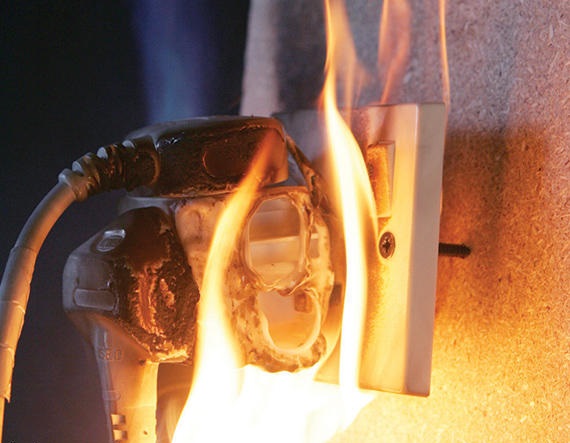It’s easy to spot danger. For instance, a hiker in the woods would immediately know she was in danger when she sees a 900 pound grizzly bear stand up in front of her with his claws and fangs blazing. “Yep, that’s danger,” she might say to herself. But back at home, she might not recognize the dangerous electrical fire hazards lurking behind her walls. Read on to find out what they are and how to detect them.
Old Wiring
Electrical systems get outdated fast and are only designed to last 30 or 40 years. Older fuses were set up to handle about 30 amps of power, while many homes now have up to 200 amps.
How to spot it: If your house is more than 40 years old, look out for circuit breakers that trip and fuses that blow repeatedly.
How to fix it: Every case is different, so call an electrician to survey the situation in your home. He’ll recommend the past plan of action to bring your wiring up to code.
Aluminum Wiring
Back in the 1960s and 1970s, aluminum wiring was the standard. But we know now that it oxidizes and corrodes more easily than today’s copper wiring and aluminum wires are linked to many electrical fires.
How to spot it: If your home was built (or an addition added) in the ’60s or ’70s, be on the lookout. You can check for a brand name or the word “aluminum” printed or embossed anywhere there’s exposed wiring, like an attic or electric panel, but an electrician can check thoroughly for the wiring itself.
How to fix it: An electrician can keep problems at bay by installing copper connectors called “pigtails” at receptacles and breakers.
Arc Faults
Have you ever seen a spark jump through the air? Well that kind of thing can happen inside your walls and cause a fire. Any damaged wiring—whether from age or something like drilling into the wall—could create an arc fault and send an electrical current off its intended path.
How to spot it: It’s tough. Like, nearly impossible.
How to fix it: We can’t fix what we can’t see. But the good news is that arc faults are easy to prevent against. An electrician can upgrade standard circuit breakers to arc-fault circuit interrupters (AFCI), which can sense the electrical abnormalities that arc faults create and shut down circuits before they overheat.









Recent Comments